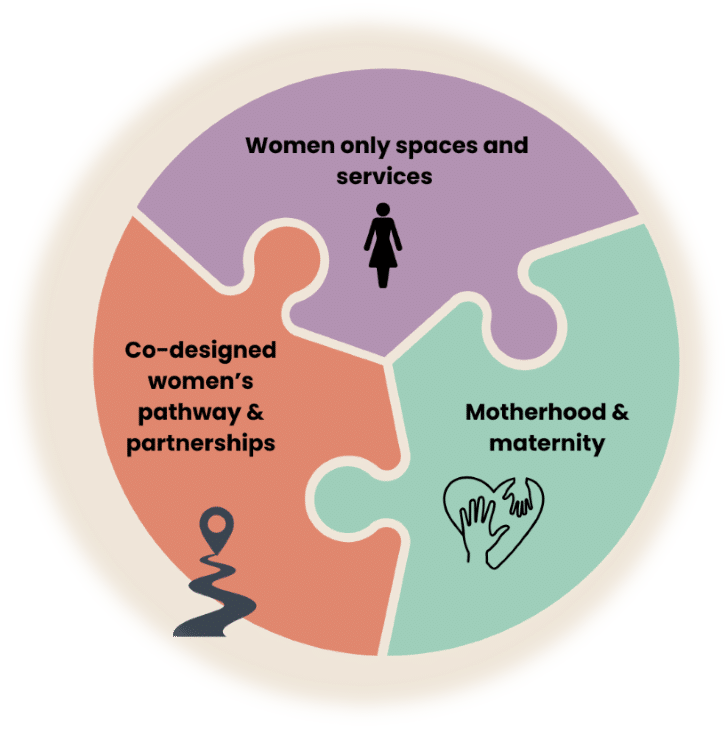Womanifesto
Last Friday (19 September 2025) Collective Voice published a Womaninfesto with the aim of improving drug and alcohol treatment for women. The report was written by the Women’s Treatment Working Group which is a group of women in leadership roles from both specialist and mainstream services.
A distinct approach
The Womanifesto opens by setting out why women’s treatment needs a distinct approach, arguing that women’s experiences with substance use differ significantly from men’s, necessitating a tailored response:
Women comprise 52% of the population but only 33% of treatment service users.
- They face higher rates of childhood trauma and interpersonal violence.
- Drug-related deaths among women continue to rise.
- Women are six times more likely than men to have children removed due to substance use.
- They are overrepresented in maternal deaths, often linked to domestic abuse.
Recommendations
The report makes three key recommendations to Government; providing a rationale, key components of implementation and next steps for each.
Recommendation One – Women only spaces and services
Ask: Make women-only spaces and services a mandatory requirement for all drug and alcohol treatment providers.
Rationale: Women often have histories of trauma and male violence. Single-sex environments provide physical and psychological safety, enabling more effective engagement and recovery.
Implementation:
- Women-only groups and drop-ins
- Female key workers by default
- Staff trained in women’s issues
- Women-centric health assessments and care plans
- Timely access to women-only residential services
- Policies addressing domestic abuse, menopause, and pregnancy.
Next Steps:
- Develop strategic approaches and minimum standards for women’s services
- Make compliance with these standards a commissioning requirement
Recommendation Two – Motherhood and maternity
Ask: Improve responses for mothers, including those without children in their care.
Rationale: Fear of child removal deters mothers from seeking help. One in five women has another child after removal, often facing accelerated proceedings. Stigma and lack of child-friendly environments further hinder access.
- Implementation:
Strength-based approaches to keep families together - Timely, appropriate interventions
- Specialist support for women at risk of child removal
- Trauma-informed, collaborative safeguarding practices
Next Steps:
- Share findings from the June 2025 sector-wide safeguarding engagement
- Explore opportunities for system-wide improvement in collaboration with children’s social care
Recommendation Three – Co-designed women’s pathway and partnerships
Ask: Redesign the treatment system from a woman’s perspective, with strong partnerships across services.
Rationale: Women face unique barriers and require tailored responses. Generic tweaks are insufficient; a full redesign is needed.
Implementation:
- Flexible, trauma-informed access (e.g., outreach, relational approaches)
- Proactive barrier reduction (e.g., childcare provision)
- Co-designed services with women
- Strong partnerships with women’s centres, domestic abuse and sexual violence (DASV) services, and sexual health providers
Next Steps:
- Commissioning areas to map women’s treatment journeys
- Identify missed opportunities and key local partners
- Ensure women with lived experience are central to the mapping process
Conclusion
In conclusion, the Women’s Treatment Working Group calls on OHID to co-produce a gender-responsive treatment system that reflects the realities of women’s lives. Through dedicated spaces, support for mothers, and co-designed pathways, we can build a system that is safe, inclusive, and effective for all women.




